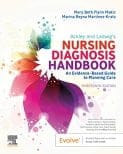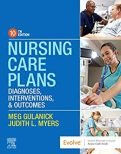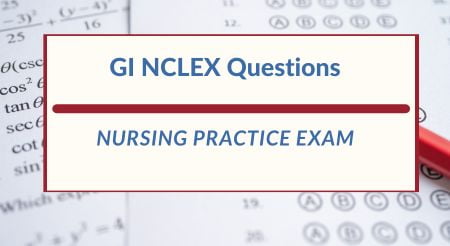GI NCLEX Questions Test Bank
Test your knowledge of gastrointestinal NCLEX Questions. This is set #2. It contains GI NCLEX Practice questions with answers and rationales.
For More GI questions, please see our Gastrointestinal NCLEX Practice Test Page.
Gastrointestinal Nursing Diagnosis and Care Plans
Results
#1. A client with suspected gastroenteritis is experiencing diarrhea and vomiting. The nurse should prioritize which intervention to manage the client's symptoms?
Ensuring adequate hydration.
Rationale: Diarrhea and vomiting can lead to dehydration, which can be life-threatening, especially in children and older adults. The nurse should prioritize ensuring adequate hydration to prevent complications.
#2. A client with chronic gastritis is advised to avoid certain foods to reduce irritation of the stomach lining. The nurse should instruct the client to avoid:
Spicy and acidic foods.
Rationale: Spicy and acidic foods can irritate the stomach lining and exacerbate the symptoms of chronic gastritis. The client should be advised to avoid such foods.
#3. A client with a history of peptic ulcer disease (PUD) is prescribed sucralfate (Carafate). The nurse should explain that this medication works by:
Coating and protecting the stomach lining.
Rationale: Sucralfate is a medication that forms a protective barrier over the stomach lining, creating a physical barrier to protect it from the effects of stomach acid.
#4. A client with hepatitis C asks the nurse about how the virus is primarily transmitted. Which response by the nurse is most accurate?
“Hepatitis C is transmitted by sharing needles with infected individuals.”
Rationale: Hepatitis C is primarily transmitted through exposure to infected blood, such as through sharing needles or other equipment used for injecting drugs.
#5. A client with inflammatory bowel disease (IBD) is experiencing a flare-up of symptoms, including diarrhea and abdominal pain. The nurse should recommend a diet that is:
Low in lactose.
Rationale: During a flare-up of IBD, the intestinal lining may be inflamed and damaged, leading to a temporary lactase deficiency. A low-lactose diet can help reduce symptoms of diarrhea and abdominal discomfort.
#6. A client is admitted with acute cholecystitis. The nurse should implement which dietary restriction to manage the client's condition?
Low-fat diet.
Rationale: Acute cholecystitis is often associated with gallstones obstructing the bile ducts. A low-fat diet helps reduce the workload of the gallbladder and may alleviate symptoms.
#7. A client with gastroesophageal reflux disease (GERD) is prescribed ranitidine (Zantac). The nurse understands that the primary action of this medication is:
Reduce gastric acid secretion.
Rationale: Ranitidine is an H2-receptor antagonist that decreases gastric acid production by blocking histamine receptors in the stomach’s parietal cells.
#8. A client with suspected acute pancreatitis is admitted to the hospital. The nurse should place the client in which position to reduce abdominal discomfort?
Semi-Fowler’s position with knees flexed.
Rationale: Semi-Fowler’s position with knees flexed can help reduce abdominal discomfort in clients with acute pancreatitis by decreasing pressure on the abdomen.
#9. A client with chronic liver disease is at risk for developing hepatic encephalopathy. The nurse should instruct the client to avoid which dietary protein source?
Chicken breast.
Rationale: During hepatic encephalopathy, a low-protein diet is often recommended. Among the options, chicken breast has a higher protein content than the others, making it less suitable for this condition.
#10. A client with gastroenteritis is prescribed oral rehydration therapy (ORT). The nurse should educate the client to take ORT in which manner?
Over the course of 1-2 hours.
Rationale: Oral rehydration therapy (ORT) should be taken slowly over 1-2 hours in small, frequent sips to avoid overwhelming the stomach and to promote better absorption.
#11. A client with diverticulitis is experiencing lower abdominal pain and tenderness. The nurse should instruct the client to avoid which type of food?
Fresh fruits.
Rationale: During a diverticulitis flare-up, the client is often advised to avoid fresh fruits and other foods with small seeds to reduce irritation and inflammation in the diverticula.
#12. A client with a history of peptic ulcer disease (PUD) is experiencing abdominal pain. The nurse should expect the healthcare provider to order which diagnostic test to confirm the diagnosis?
Endoscopy.
Rationale: Endoscopy allows direct visualization of the stomach lining and can help identify the presence of peptic ulcers or other abnormalities.
#13. A client with cirrhosis is at risk of developing esophageal varices. The nurse should assess the client for which clinical manifestation of esophageal varices?
Vomiting of blood.
Rationale: Esophageal varices are swollen, fragile blood vessels in the esophagus that can rupture and cause significant bleeding. Vomiting of blood (hematemesis) is a critical sign of this complication.
#14. A client with ulcerative colitis is experiencing diarrhea and weight loss. The nurse should plan to provide which type of diet for this client to promote healing and reduce symptoms?
Low-residue diet.
Rationale: A low-residue diet is often recommended for clients with ulcerative colitis to reduce the frequency and volume of stools, as well as to minimize irritation to the inflamed bowel.
#15. A client with chronic liver disease is experiencing ascites. The nurse should instruct the client to limit the intake of which mineral to help manage the condition?
Sodium.
Rationale: Limiting sodium intake can help reduce fluid retention and manage ascites in clients with chronic liver disease.
#16. A client with peptic ulcer disease (PUD) is prescribed triple therapy for Helicobacter pylori eradication. The nurse should expect the client to receive which combination of medications?
Omeprazole, amoxicillin, and metronidazole.
Rationale: Triple therapy for Helicobacter pylori eradication typically consists of a proton pump inhibitor (PPI) such as omeprazole, combined with two antibiotics: amoxicillin and metronidazole.
#17. A client with suspected malabsorption disorder is undergoing testing for fat absorption. The nurse should expect the healthcare provider to order which diagnostic test?
Fecal fat test.
Rationale: A fecal fat test is used to assess the amount of fat excreted in the stool, which helps determine the efficiency of fat absorption in the gastrointestinal tract.
#18. A client with a history of chronic constipation is prescribed docusate sodium (Colace). The nurse should explain that this medication works by:
Softening stools.
Rationale: Docusate sodium is a stool softener that helps soften the stools, making them easier to pass and relieving constipation.
#19. A client with gallstones is experiencing biliary colic. The nurse should instruct the client to avoid which type of food to prevent exacerbation of symptoms?
Fatty foods.
Rationale: Fatty foods can stimulate the gallbladder to contract, potentially causing biliary colic in clients with gallstones.
#20. A client with chronic liver disease is experiencing hepatic encephalopathy. The nurse should assess the client for which neurological symptom?
Restlessness.
Rationale: Restlessness is a common neurological symptom in clients with hepatic encephalopathy due to the accumulation of ammonia in the bloodstream.
#21. A client with gastroesophageal reflux disease (GERD) is prescribed antacids. The nurse should instruct the client to take antacids:
After meals and at bedtime.
Rationale: Antacids should be taken after meals and at bedtime to provide relief from heartburn and reduce stomach acid.
#22. A client with irritable bowel syndrome (IBS) is experiencing alternating constipation and diarrhea. The nurse should recommend which dietary modification to manage the client's symptoms?
Increase fiber intake.
Rationale: Increasing fiber intake can help regulate bowel movements and relieve symptoms in clients with irritable bowel syndrome (IBS) who experience constipation and diarrhea.
#23. A client with gastroenteritis is receiving intravenous (IV) fluids to manage dehydration. The nurse should monitor the client for which potential complication of IV therapy?
Fluid overload.
Rationale: When administering IV fluids, the nurse should closely monitor for signs of fluid overload, such as increased heart rate, elevated blood pressure, and respiratory distress.
#24. A client with inflammatory bowel disease (IBD) is prescribed mesalamine (Asacol). The nurse should instruct the client to report which adverse effect related to this medication?
Bloody diarrhea.
Rationale: Mesalamine is used to treat inflammatory conditions like IBD but can rarely cause a paradoxical worsening of symptoms, including bloody diarrhea. The client should report this immediately.
#25. A client with peptic ulcer disease (PUD) is prescribed sucralfate (Carafate). The nurse should administer this medication:
On an empty stomach.
Rationale: Sucralfate is most effective when administered on an empty stomach to allow it to form a protective barrier over the stomach lining before meals.

Best Nursing Books and Resources
These are the nursing books and resources that we recommend.
NurseStudy.net is a participant in the Amazon Services LLC Associates Program. Included below are affiliate links from Amazon at no additional cost from you. We may earn a small commission from your purchase. Please see our Privacy Policy

The Nursing Diagnosis Handbook E-Book: An Evidence-Based Guide to Planning Care
This is an excellent reference for nurses and nursing students. While it is a great resource for writing nursing care plans and nursing diagnoses, it also helps guide the nurse to match the nursing diagnosis to the patient assessment and diagnosis.
This handbook has been updated with NANDA-I approved Nursing Diagnoses that incorporates NOC and NIC taxonomies and evidenced based nursing interventions and much more.

NANDA International Nursing Diagnoses: Definitions & Classification, 2021-2023
All introductory chapters in this updated version of a ground-breaking text have been completely rewritten to give nurses the knowledge they require to appreciate assessment, its relationship to diagnosis and clinical reasoning, and the goal and use of taxonomic organization at the bedside.

Nursing Care Plans: Nursing Diagnosis and Intervention
It contains more than 200 care plans that adhere to the newest evidence-based recommendations.
Additionally, it distinguishes between nursing and collaborative approaches and highlights QSEN competencies.


